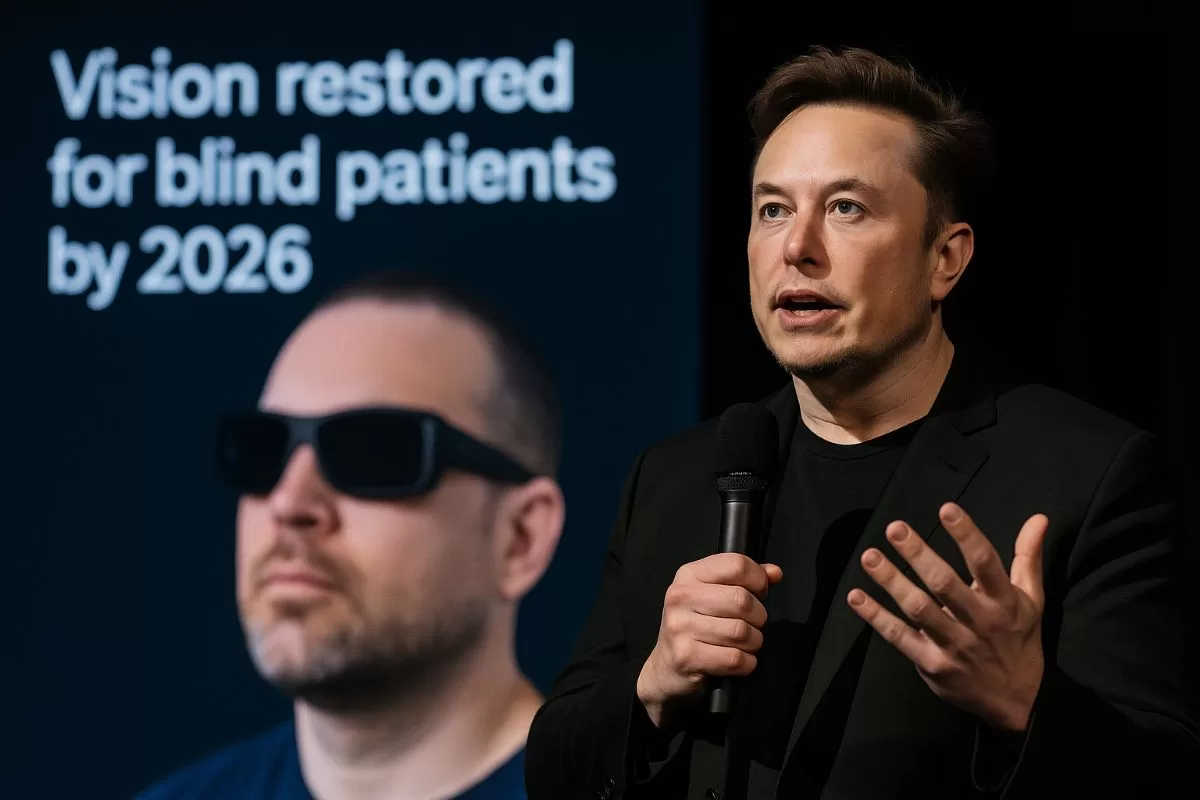
NEW YORK, June 28 (WSH) — Tesla and SpaceX founder Elon Musk has once again sent shockwaves through the global tech community.
His brain-machine interface company, Neuralink, announced a series of groundbreaking advancements at its latest press conference: new implants can now be inserted in just 1.5 seconds, and seven volunteers have already successfully used the technology to control video games, robotic arms, and even design software—using only their minds.
Musk boldly proclaimed that blindness could be cured by 2026, and full human-AI integration achieved by 2028.
Seven Volunteers Bring Mind Control to Life
In a powerful live demonstration, Neuralink revealed that seven individuals—including patients with ALS, spinal injuries, and speech impairments—have received the “Telepathy” implant. These participants showcased astonishing abilities: playing video games, operating robotic limbs, and using 3D design tools with brain signals alone. Neuralink emphasized that the breakthrough is not only about restoring physical function, but also dignity and hope for patients.
Three-Year Roadmap: The Dawn of Whole-Brain Interfaces
Neuralink unveiled an ambitious three-year plan:
- By end of 2025, the company aims to decode real-time speech from brain signals.
- In 2026, the first blind patient is expected to regain vision using the system’s “Blindsight” module.
- By 2028, the goal is to deploy multi-device systems with over 25,000 neural channels per person, effectively enabling human-AI convergence.
Robotic Surgery Accelerated, Brain Bandwidth Revolution Begins
The second-generation surgical robot, also unveiled at the event, has slashed electrode implantation time from 17 seconds to 1.5 seconds, while reaching deeper cortical regions, covering 99% of the human brain. The upgraded N1 chip connects seamlessly with external AI models, launching what Musk calls a “brain bandwidth revolution.”
Reimagining Consciousness: Human-AI Symbiosis Ahead
Musk argued that humans are already “biological-digital hybrids,” with smartphones and computers acting as primitive external devices. Neuralink’s mission, he explained, is to overcome the bandwidth bottleneck of the biological brain—boosting transmission speed millions of times over, and syncing collective human consciousness with AI to mitigate civilization-level risks.
Background: Why Brain-Machine Interfaces Are Booming
Brain-computer interfaces (BCIs) are gaining rapid traction as the next frontier of human-computer interaction. By decoding brain signals to control external devices, BCIs hold transformative promise across medicine, defense, virtual reality, and more. Musk’s Neuralink, founded in 2016, leads the global field with its technological ambition and philosophical scope, aiming to open the door to the realm of consciousness itself.

